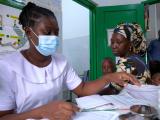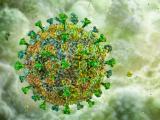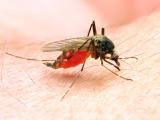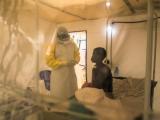Sep 5, 2012
US warns 39 countries about hantavirus risk for Yosemite visitors
US health officials have notified 39 other countries about the risk of hantavirus infections in their residents who recently visited Yosemite National Park, the Los Angeles Times and other media outlets reported today. Six recent hantavirus pulmonary syndrome (HPS) cases, with two deaths, recently occurred in people who had visited the park. David Wong, MD, an epidemiologist with the National Park Service, said the agency believes that 2,000 to 2,500 international visitors may have been exposed to the virus, according to the Times. Last week the Centers for Disease Control and Prevention said up to 10,000 people were at risk after staying in tent cabins in Curry Village between Jun 10 and Aug 24, the story noted. It said the US Department of Health and Human Services used an international health notification network to issue the advisory over the weekend. In other developments, the World Health
Organization (WHO) noted the Yosemite-related HPS cases in a statement yesterday. The virus is spread through the urine, droppings, and saliva of deer mice and certain other rodents.
Sep 5 Times story
Sep 4 WHO statement
WHO confirms 14 deaths in DR Congo Ebola outbreak
The WHO today said the continuing investigation of an Ebola outbreak in the Democratic Republic of Congo shows that cases remain limited to two health zones in the Haut-Uele district of Orientale province. As of Sep 3, 28 cases had been reported, including 8 confirmed, 6 probable, and 14 suspected. The latest total is four more than the WHO reported in its last update on Aug 30. The agency reported 14 deaths, an increase of 3 from the previous WHO report. The outbreak involves the Bundibugyo strain of Ebola and appears to be unrelated to a recent outbreak in Uganda's Kibaale district, which involved the Sudan strain, the WHO said.
Sep 5 WHO statement
Blood disorder common in Southeast Asia may protect against P vivax malaria
A study involving children in Papua New Guinea suggests that a blood disorder that is common in Southeast Asia, called Southeast Asia ovalocytosis (SAO), may provide considerable protection against Plasmodium vivax malaria, according to a report yesterday in PLoS Medicine. Genetic and lab studies have suggested that SAO, in which red blood cells are elliptical instead of biconcave, may protect against P vivax infections, the report says, much as sickle cell trait provides a survival advantage against P falciparum malaria. An international research team tested this by conducting genetic tests of 1,975 Papua New Guinea children involved in three separate malaria studies. The prevalence of SAO in the three studies ranged from 3.4% to 13.1%. The researchers found that the SAO genetic defect was associated with a 43% reduction in risk of clinical P vivax episodes in infants
in the largest of the studies and a 52% to 55% reduction in P vivax reinfection in children in another study. In the third investigation, a case-control study, the researchers found that none of the children with P vivax or mixed P falciparum/P vivax malaria had the SAO defect. The findings suggest that future studies of genetic adaptations to malaria should include all forms of malaria, not just P falciparum, which causes the most severe disease, according to the editors' summary of the report. In a press release from the Walter + Eliza Hall Institute in Australia, senior author Ivo Mueller, MSc, PhD, said the findings challenge the view that P falciparum is the only malaria parasite that affects human genome evolution.
Sep 4 PLoS Med report
Sep 4 Hall Institute press release


















